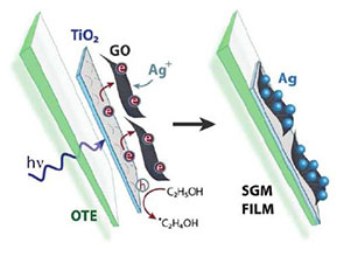Researchers at the laboratory of Prashant V. Kamat, the John A. Zahm Professor of Science at the University of Notre Dame, are working on ways to detect trace amounts of environmental contaminants. The researchers used silver nanoparticles to enhance the chemical detection’s sensitivity limit with the help of surface-enhanced Raman spectroscopy.

The researchers have synthesized a semiconductor-graphene-metal film with unique advantages. In this film, metal nanoparticles and semiconductor titanium dioxide are deposited on either side of the graphene surface. The concentration of local contaminant close to the silver nanoparticles increases through the absorption of organic molecules by the graphene surface of the film. Kamat informed that precise control over metal deposition and size is essential to improve the film’s performance to test water quality.
The graphene oxide film captures the electrons from titanium dioxide under ultraviolet illumination. These electrons transfer throughout the film, thus resulting in the reduction of metal ions into metal nanoparticles, a process called electron-hopping. This process creates a side-separated semiconductor-metal nanoparticle design on the graphene oxide film. The researchers have shown that the electron transfer is not restricted to the two-dimensional plane. Electron hopping occurs at the other side of the graphene and results in the side-selective deposition of silver nanoparticles.
Kamat informed that having a graphene sheet with a metal catalyst on one side and semiconductor nanoparticles on the other side is helpful in fabricating a hybrid assembly that is capable of selectively splitting hydrogen and oxygen.
The study results have been reported in the Journal of Physical Chemistry Letters.